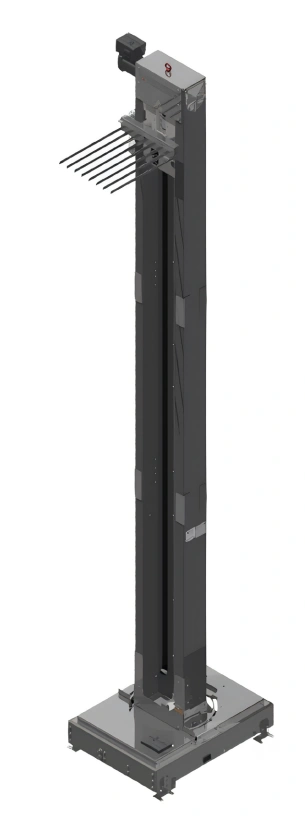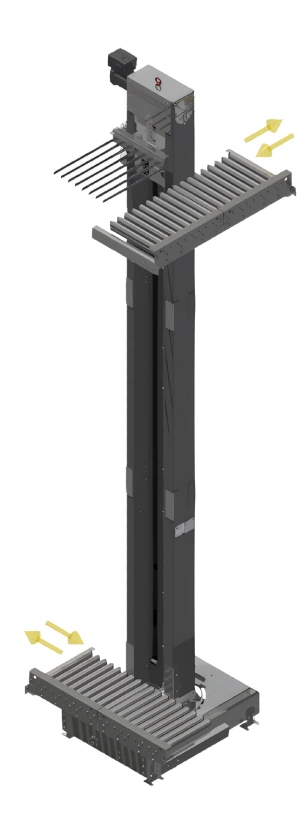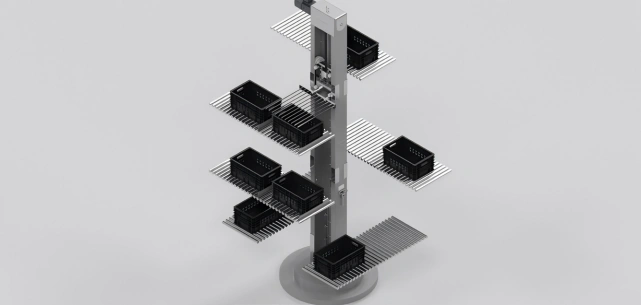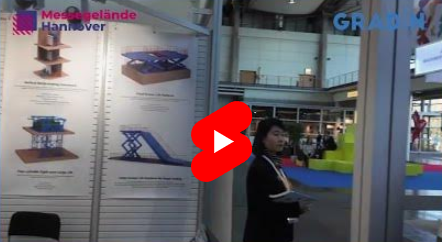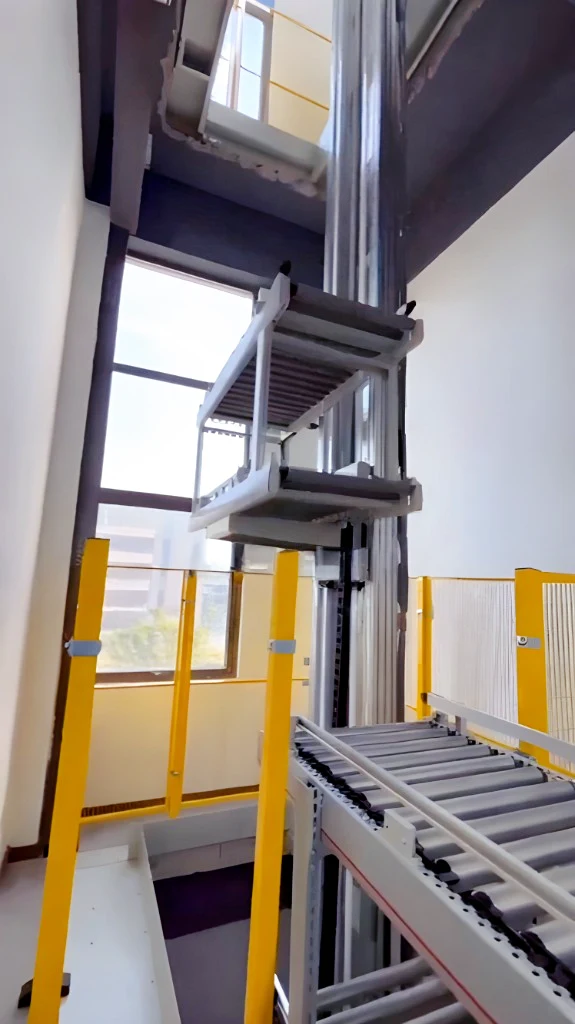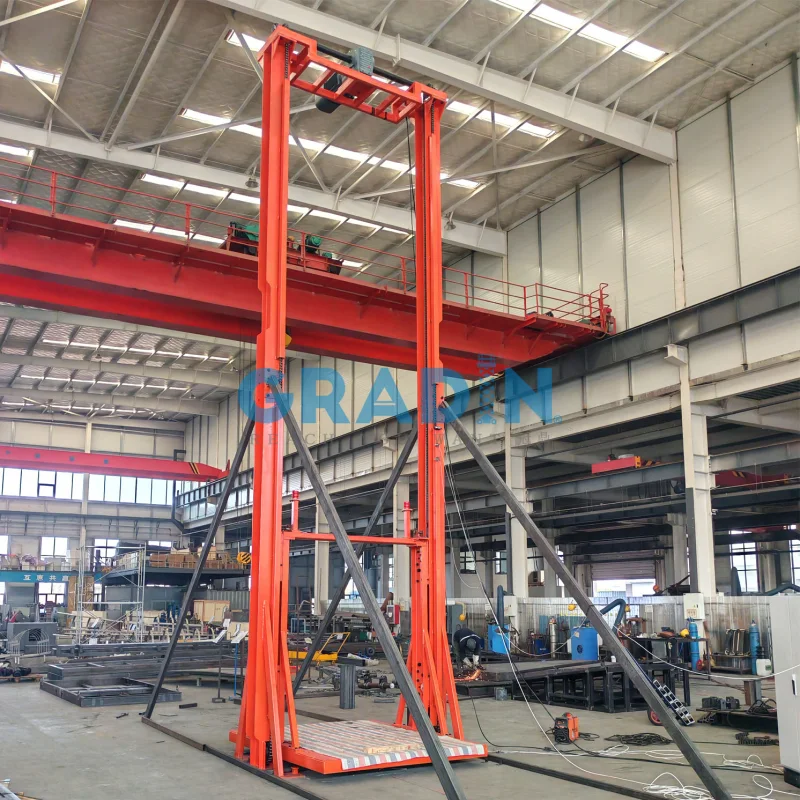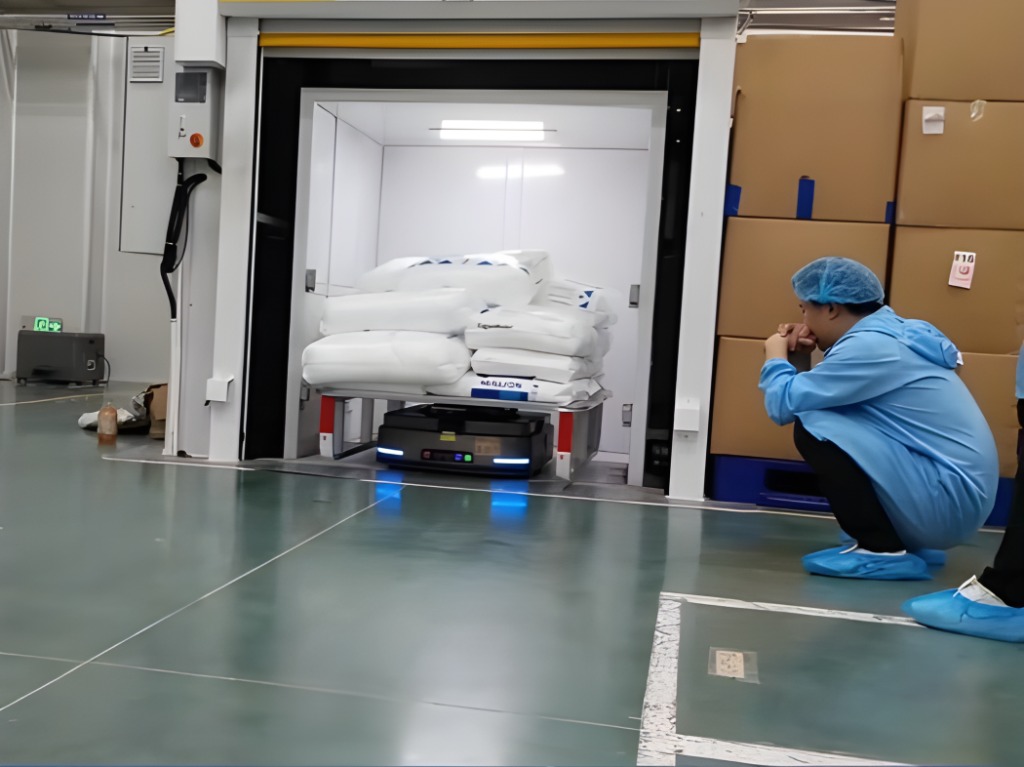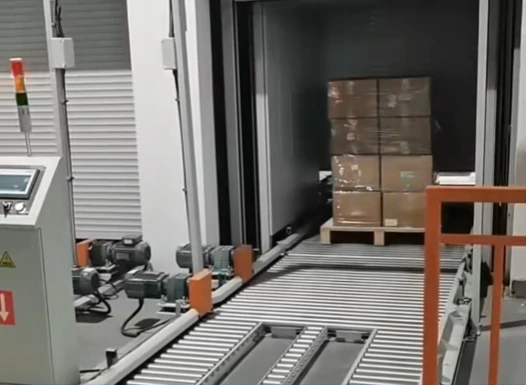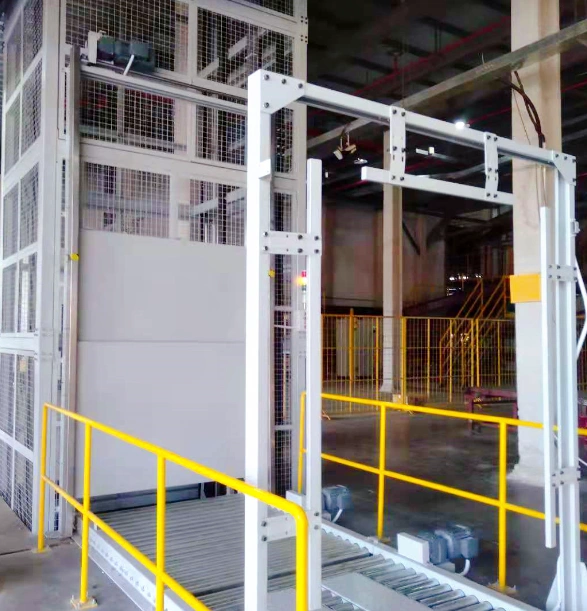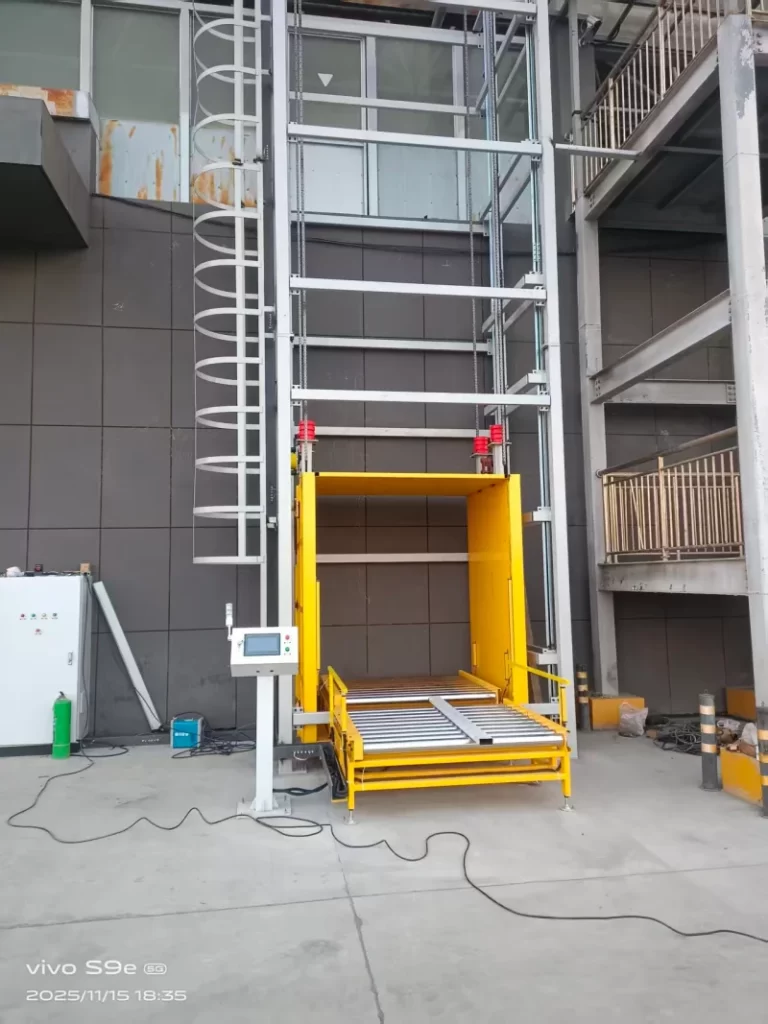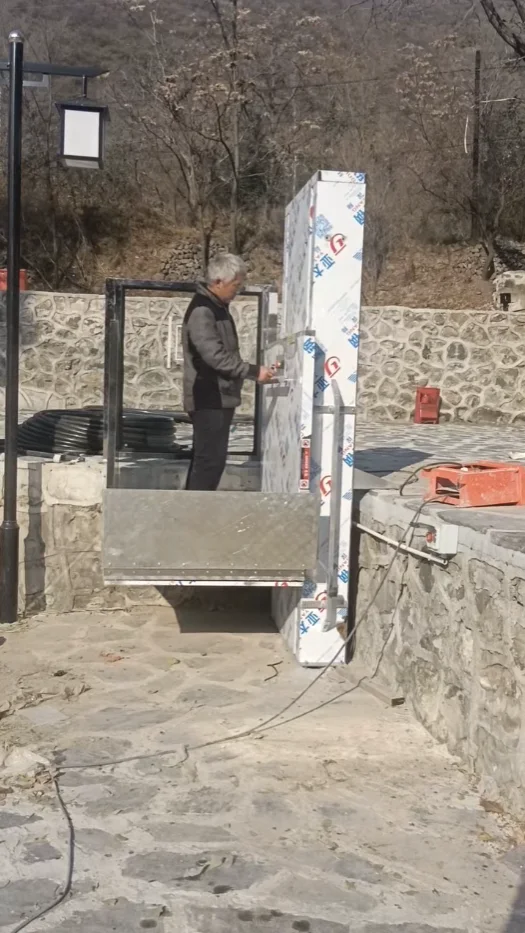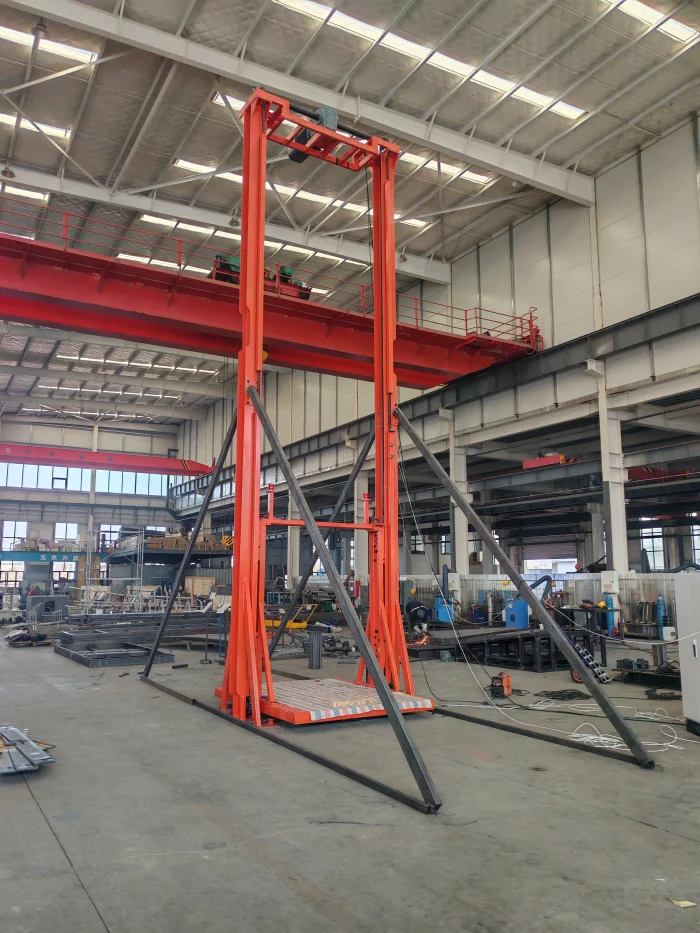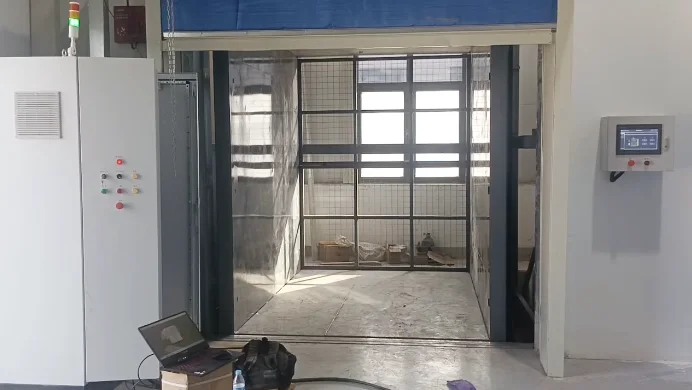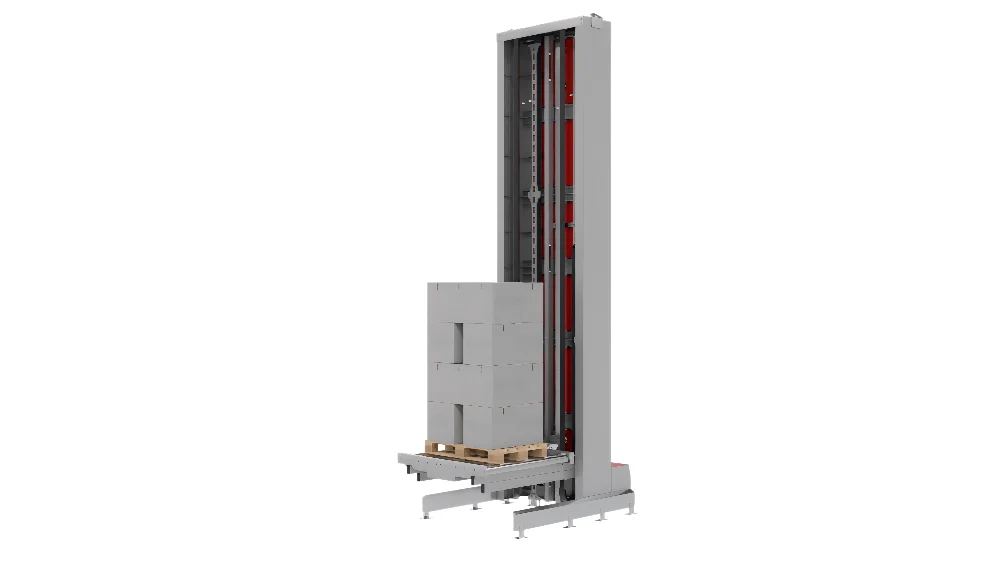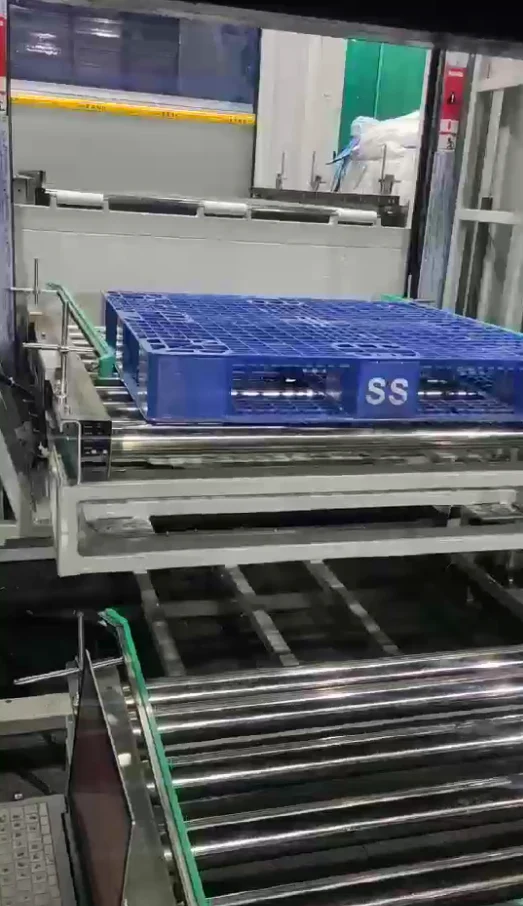9.19.2025 / Lecture de 6 minutes
Analyse d'un cas d'ascenseur vertical à base rotative - Hub de transfert intelligent multi-industries pour une automatisation flexible
Vue d'ensemble
Cette analyse porte sur les Base rotative Élévateur verticalLe système de levage de l'entreprise est une solution intégrée innovante qui combine des capacités de levage vertical et de rotation horizontale.
Conçu pour répondre aux principales difficultés rencontrées par les systèmes modernes de logistique et de fabrication intelligents, telles que l'espace limité et les exigences complexes en matière de flux de matériaux, cet équipement sert de plaque tournante pour les transferts intelligents.
Il permet une manipulation précise et multidirectionnelle des matériaux sur plusieurs niveaux, ce qui constitue une solution idéale pour les installations d'automatisation très flexibles où l'espace est limité et où les directions de flux de travail sont variées.
Paramètres de base
| Paramètres | Spécifications |
|---|---|
| Fonction principale | Levage vertical + rotation horizontale |
| Plage de rotation | ±90° ou 180° (personnalisable) |
| Capacité de levage | Personnalisable en fonction de l'application |
| Système de contrôle | PLC (Programmable Logic Control) |
| Applications typiques | Tri vertical, alimentation multiligne, stockage tampon |
| Avantage principal | Remplace plusieurs convoyeurs traditionnels, ce qui permet de gagner beaucoup de place. |
Comment ça marche
Le système s'articule autour d'une base rotative programmable intégrée à un mécanisme de levage vertical.
L'unité commence par élever la charge à la hauteur cible.
Ensuite, la base rotative s'actionne, faisant pivoter la plate-forme avec précision selon des angles prédéfinis (tels que ±90° ou 180°) pour transférer les matériaux vers des convoyeurs, des tampons ou des postes de travail connectés dans des directions différentes.
L'ensemble du processus est géré par un système de contrôle PLC, permettant un cycle entièrement automatisé et efficace.
Les défis
Les systèmes traditionnels sont souvent confrontés :
- Des mises en page peu flexibles: Les chemins de convoyage fixes ne sont pas adaptés aux besoins de flux multidirectionnels.
- Coûts élevés de l'espace: La connexion de différents points nécessite de vastes réseaux de convoyeurs, qui consomment de l'espace précieux au sol et en hauteur.
- Faible efficacité du système: Les points de transfert multiples entre les équipements augmentent les temps de cycle et réduisent le débit global.
- Difficulté de mise à niveau: Les lignes de production existantes manquent d'espace ou de flexibilité pour intégrer de nouveaux processus.
Solutions
- Fonctionnalité intégrée: Combine le mouvement vertical et la rotation en une seule unité, ce qui évite d'avoir recours à des élévateurs, des plateaux tournants et des convoyeurs séparés.
- Optimisation de l'espace: Une seule empreinte relie plusieurs directions et niveaux, ce qui permet de maximiser l'utilisation de l'espace dans les rénovations de friches industrielles et les nouvelles installations.
- Flexibilité accrue: La base rotative permet对接 (l'arrimage) avec des équipements dans différentes orientations (avant, arrière, gauche, droite), ce qui facilite la reconfiguration des lignes de production et de logistique.
- Intégration intelligente: Le contrôle PLC permet une interface transparente avec les AGV, les AS/RS, les systèmes de tri et les machines de production, agissant comme un hub intelligent qui améliore la continuité du flux de travail.
Applications industrielles
- Logistique intelligente et commerce électronique: Il sert de plate-forme d'entrée/sortie peu encombrante pour les systèmes de stockage et de récupération automatisés (AS/RS, navettes à quatre voies) et permet un réapprovisionnement dynamique des postes de préparation de commandes.
- Fabrication flexible: Il sert de centre d'alimentation entre les cellules CNC, les lignes d'assemblage et les stations d'emballage, s'adaptant facilement aux changements de production et à l'assemblage de modèles mixtes.
- Automobile et pièces détachées: Manipule les composants lourds tels que les moteurs et les transmissions entre les étapes de traitement, optimisant ainsi la logistique complexe au sein des usines d'assemblage.
- Aliments et produits pharmaceutiques: Facilite le transfert hygiénique et automatisé entre les différentes zones de propreté des salles blanches et détourne les produits finis vers les lignes d'emballage ou de palettisation.
- Logistique aéroportuaire et tri postal: Fonctionne au sein des systèmes de traitement des bagages (BHS) pour acheminer les bagages vers des lignes de vol spécifiques et permet le tri croisé entre les différents niveaux de trieuses de colis.
- Nouvelles énergies et aérospatiale: Gère la manipulation précise et stable d'articles lourds, précieux ou délicats tels que des cellules de batteries, des modules et des pièces composites pour l'aérospatiale entre des processus dépendant de la précision.
